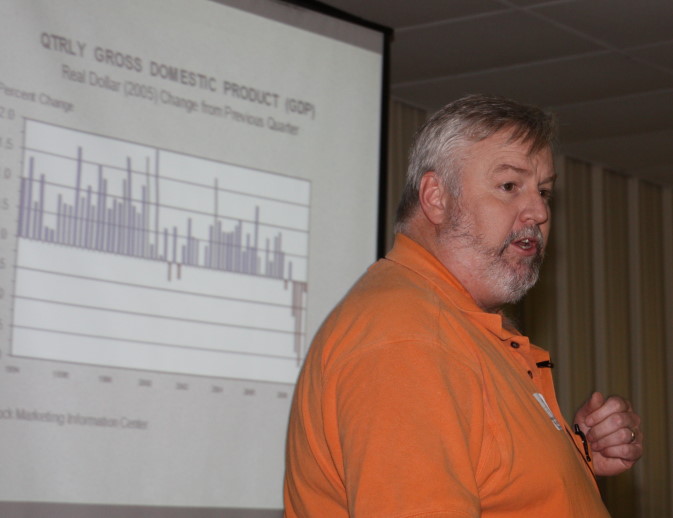
Agricultural News
Drought Planning Would Be Prudent Given Conditions, Peel Says
Tue, 29 May 2012 10:36:12 CDT

In his latest column in the Cow/Calf Newsletter, Derrell Peel, Oklahoma State University Extension livestock marketing specialist, says producers should at least be thinking of-if not actively preparing for-drought conditions.
With just a couple of days left in May, it appears that the January-May period will be the warmest on record in Oklahoma. Abundant moisture through the winter has slowed dramatically with precipitation across the state averaging just 50 percent of normal in the past month. Four of nine climate regions in Oklahoma have received only about one-third of normal precipitation in the past 30 days. Combining below average rain with above average temperatures and add lots of wind and you have a dramatic increase in dryness that is quickly slowing crop and forage growth. The term "flash drought" is being used to describe the rapid onset of dry conditions in Oklahoma and other regions.
Most of Oklahoma is not in drought at this time and rain at any time will alleviate the current concerns. However, the dramatic slowdown in forage and hay growth is a threat and effective drought management means that planning must occur before the drought is a reality. If current conditions persist, forage availability will soon become fixed and producers will need to evaluate standing forage and hay supplies and make plans accordingly. With painful memories and lingering effects of the 2011 drought still fresh in mind, producers need to consider several important factors should another drought develop.
Many pastures are still in very bad condition and have recovered little. Additional stress and overuse this year will significantly compound pasture and range damage and the length of time for recovery. It is imperative that producers determine forage limits and manage pastures in a way to minimize additional damage to already stressed forages. Forage availability will determine the range of production and marketing alternatives that can be considered. Waiting too long into a developing drought before making plans will significantly reduce those alternatives.
The first consideration is marketing the current calf crop. Fall calves are at or near to weaning time and can be pulled sooner rather later if needed. The bigger challenge will be spring calves that need as much time as possible if marketed at weaning. One possibility to be evaluated is early weaning and moving calves into some sort of backgrounding program. At the current time, lightweight calf prices are roughly 25 percent higher than a year ago and with a steep price rollback on the light calves, producers should carefully evaluate the benefits of putting a limited amount of weight on lightweight calves. It may make more sense to sell the calves at lighter than normal weights unless there is a feasible opportunity to hold calves for significant weight gain.
The bigger question is how many cows can be maintained and for how long. Lessons from last year should be heeded. Producers who culled early last year preserved equity better, in many cases than producers who kept cows and invested $400-$600 per cow in additional feed costs. Bred cows in Oklahoma are worth roughly $275/head more than this time last year and cull cows are worth about $200/head more for slaughter. Drought forced culling is never easy but it is less painful when markets provide an alternative to preserve values and make it easier to deal with Mother Nature.
Drought-forced decisions are not inevitable or imminent at this time but the growing threat that exists means that drought planning is imperative now. Though a second year of drought would seriously impact the Oklahoma cattle industry, market conditions and the availability of early forage production provides considerable opportunity to mitigate potential impacts. These opportunities depend on making plans now-plans that hopefully will not be needed at all.
WebReadyTM Powered by WireReady® NSI
Top Agricultural News
More Headlines...




















